Introduction
- Managing employees;
- McGregor’s Theory X;
- Challenges in human resource.
Managing employees is one of the most important tasks in any organization. Employees’ supervision is always critical to ensure that the employees are doing the right thing in their respective assignments. According to McGregor’s Theory X, employees are always lazy individuals who need close supervision to make sure that they are working within the expectations (Levasseur, 2009). The human resource management unit has a very important responsibility of ensuring that these employees are properly supervised in all their activities at work. Some of the employees may be working away from the offices, especially the marketing and logistics teams. However, the management must find a way of monitoring them irrespective of their geographic locations. In this paper, the researcher will look at the challenges that human resource management face in supervising the employees, and how technology can be used to make this process simple.
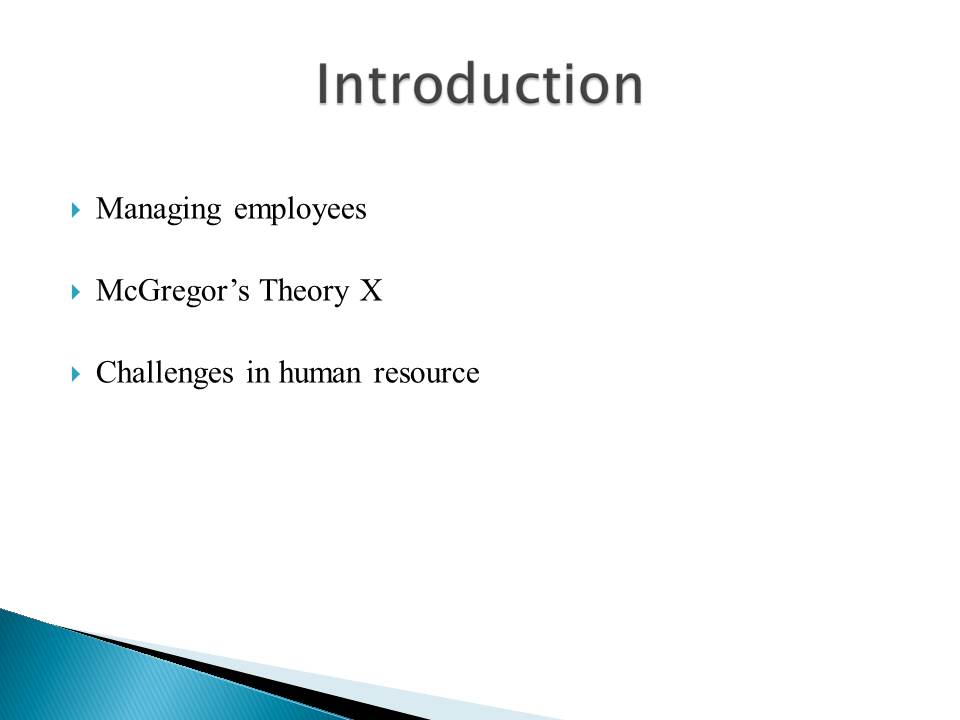
Supervisory Requirements
How to supervise the employees.
According to Certo (2010), supervision of employees should always be done in an appropriate manner that will make them feel comfortable. Even the laziest of the employees will be uncomfortable when he realizes that that there is a constant surveillance on what he is doing. This is one of the biggest requirements in supervising of the employees. The manager should ensure that the employees are comfortable with the approaches used to supervise them. They should know that their activities are being monitored without necessarily developing a feeling of intimidation. Paton and McCalman (2008) say that sometimes it may be necessary to use social supervision in such contexts. Social supervision involves allowing employees and their supervisors to work in an integrated environment where they easily interact. Employees will be aware that their activities are under surveillance without feeling intimidated.
How to identify if the employees have personal problems affecting their output in the workplace.
The supervisory approach selected should be effective enough to identify some of the challenges that employees face when addressing their assignments. According to Gaurav (2013), sometimes employees may fail to deliver good results because of a number of challenges that they face in their workplace. In this 21st century, it is always necessary to find ways of conducting a comprehensive supervision. It is not enough to just identify the weaknesses of the employees in the workplace. Sometime the management may need to identify the forces within the working environment that make these employees to underperform. A mechanism should be identified that will make it possible to identify if the poor performance is as a result of environmental forces or personal problems.
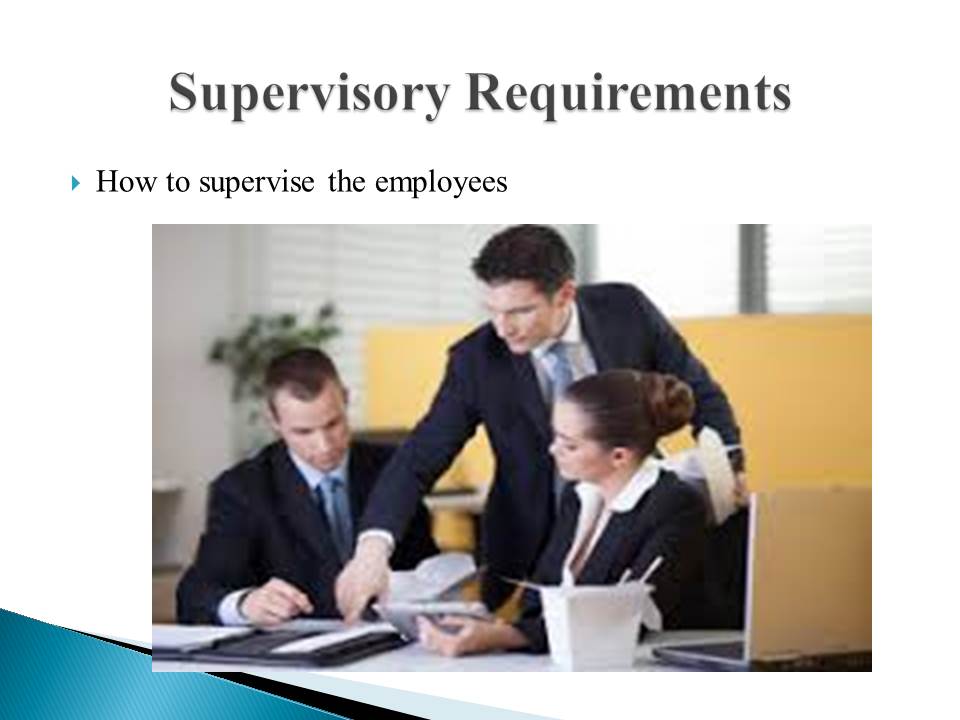
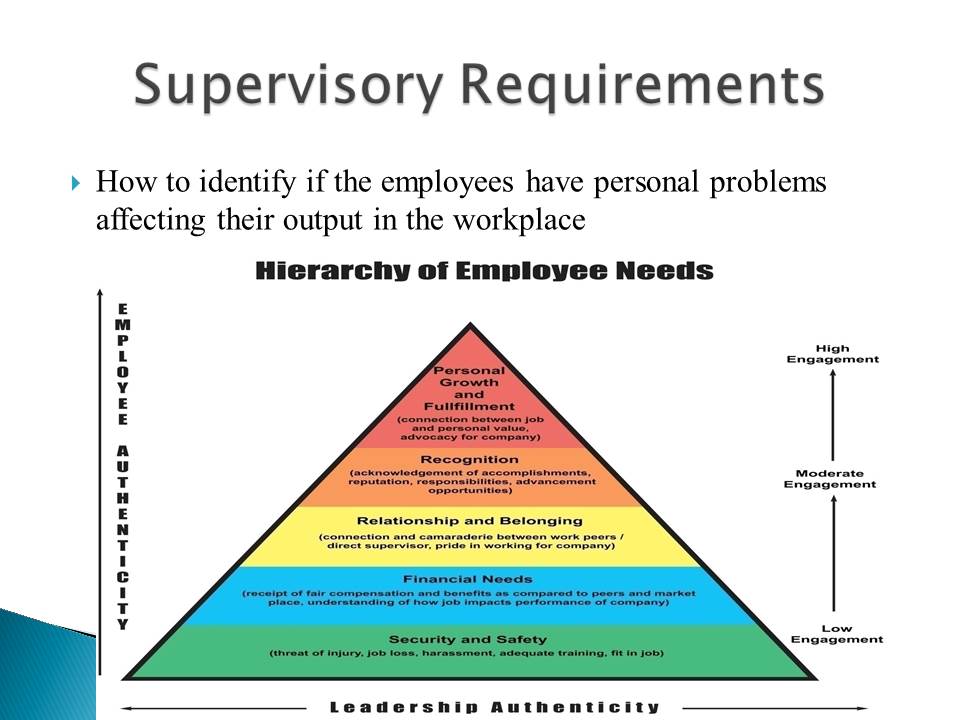
Recruitment
How to recruit qualified employees.
Supervision may be very costly, especially when managing a large number of employees. For this reason, it is important to recruit a team of employees who are self-motivated. This will help ensure that the firm has employees who can work with minimum supervision possible. Looking at the resume of the applicants during the recruitment process may not be enough. It is necessary to know their past history to find out how they performed at their previous places of work. The main focus at this stage will be to ensure that there is a team of highly dedicated employees who can supervise their own work. The recruitment process should be done professionally in order to weed out the applicants who are lazy, less qualified, or those with the tendency of inciting others against the management.
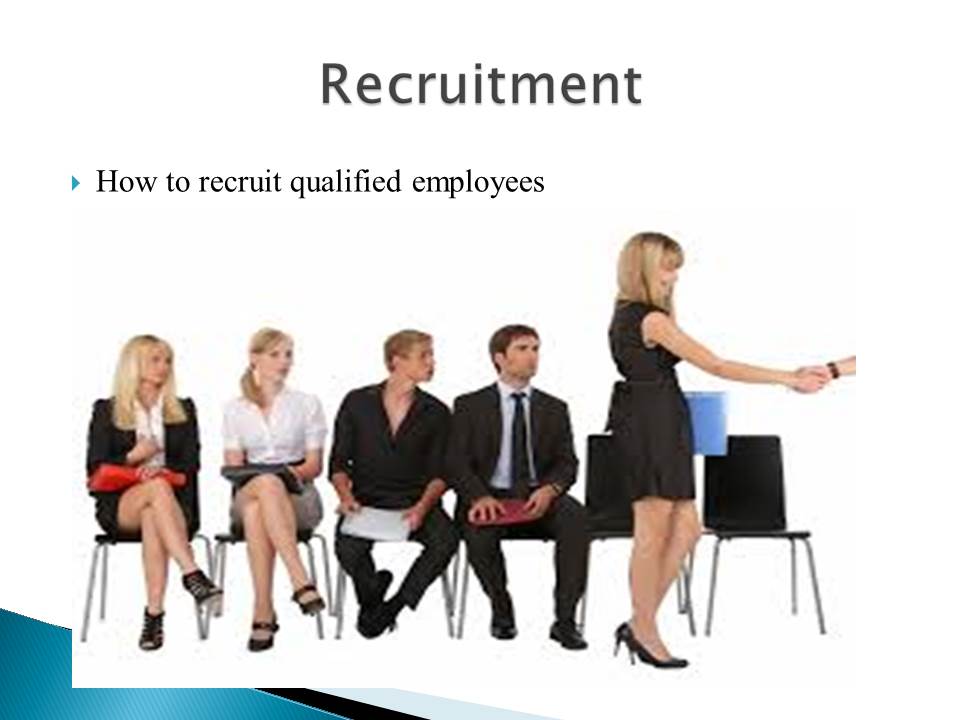
Selection
Employees selection process.
The next important stage after taking applicants through various stages of interviews and verifications is the selection process. at this stage, the panel responsible for hiring of the employees will identify the most qualified candidates for various positions within the firm. selection of the employees requires a lot of focus on the side of the management. After going through the rigorous process of interviewing the applicants and reviewing their documents, it is important to ensure that only the best are selected. The management should have a clear criteria of selecting the candidates who qualify for various posts. Each stage of the interview and reviews should be assigned some marks. The candidates who emerges with the highest marks from the entire process should be considered during the selection process.
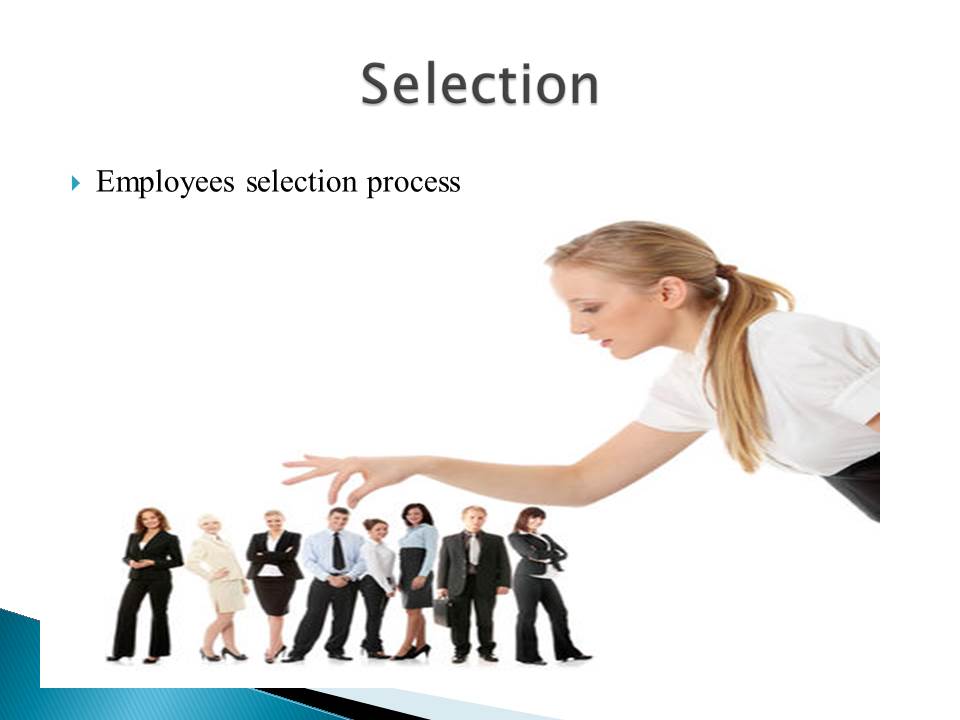
Orientation
Orienting selected employees.
The candidates who are finally selected for various posts within the firm should be taken through orientation in their respective departments. As Kronberg (2011) says, the first impression matters a lot. When an employee realizes that the workplace environment is conducive, and that everyone is working without supervision, then they will adopt to that environment. On the other hand, when they are introduced to an environment where the management is forced to push people to work, then they will be accustomed to such an environment of laziness. The orientation should be done on the first day at work where the employees will be introduced to the systems and people he or she will be working with. The orientation should also involve explaining the role of supervision, and the importance of self-supervision in every assignment within the organization.
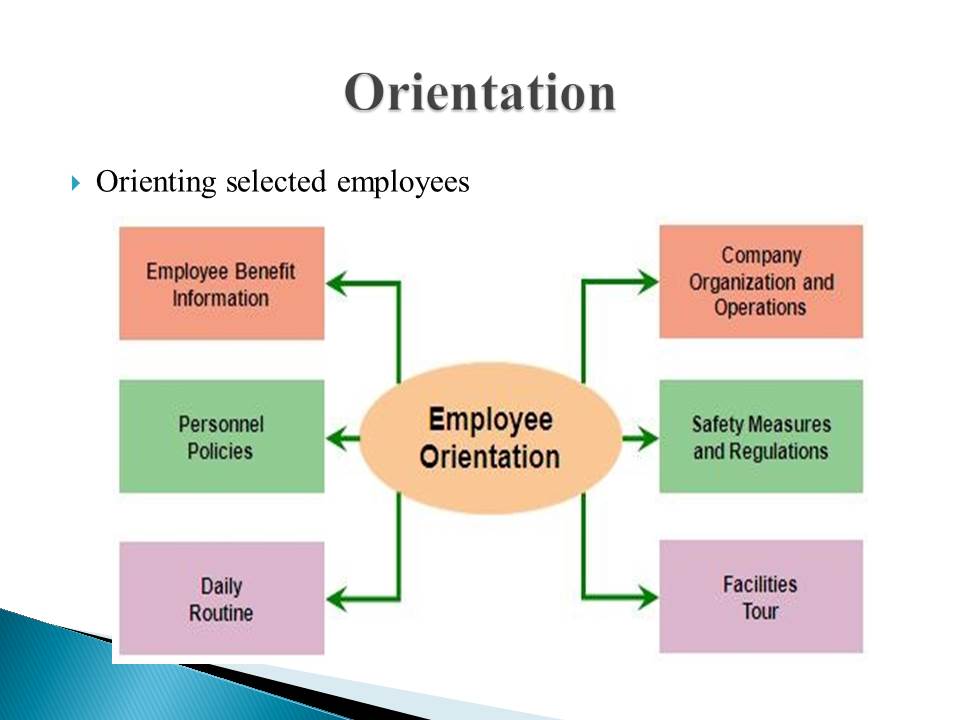
Training of Employees
Approaches in employee training.
The emerging technologies have serious impacts on the workplace environment. They bring a number of changes that may redefine the approach taken in addressing various tasks. Training of the employees is very critical in ensuring that they remain conscious of the changes within their workplace. When the employees have been oriented to their workplace environment, they will be assigned to their respective areas of work. However, the management will need to organize regular trainings for them in order to ensure that they have the capacity to use new processes and methods brought about by the technology. According to Novikova (2009), training can take two main approaches based on the resources of the organization and the number of employees.
Benefits of the employee-training processes:
- Job Description & Essential Functions Strategic Plan & Annual Goals;
- Standards of Performance;
- Observation & Feedback;
- Performance Appraisal;
- Performance Development.
The first approach of training is the in-house or at-work training process. This approach is very appropriate when an organization has limited resources and a few number of employees. When using this method, the training takes place in the workplace. The trainers will join the employees in their respective departments and demonstrate to them how they can improve their efficiency in handling various tasks. The second approach is through seminars or even higher learning institutions. In this approach, the employees will be taken to a seminar away from their workplace. Some organizations prefer taking their employees to institutions of higher learning in order to ensure that their skills are enhanced. However, this approach is costly, and many upcoming organizations may not consider using it often to train their employees.
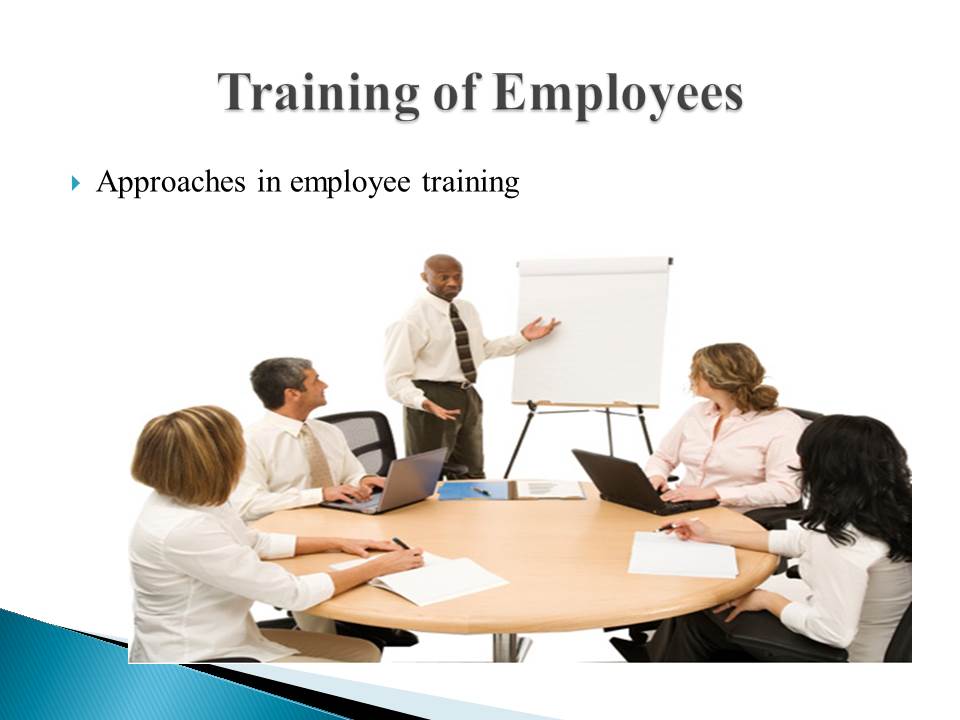
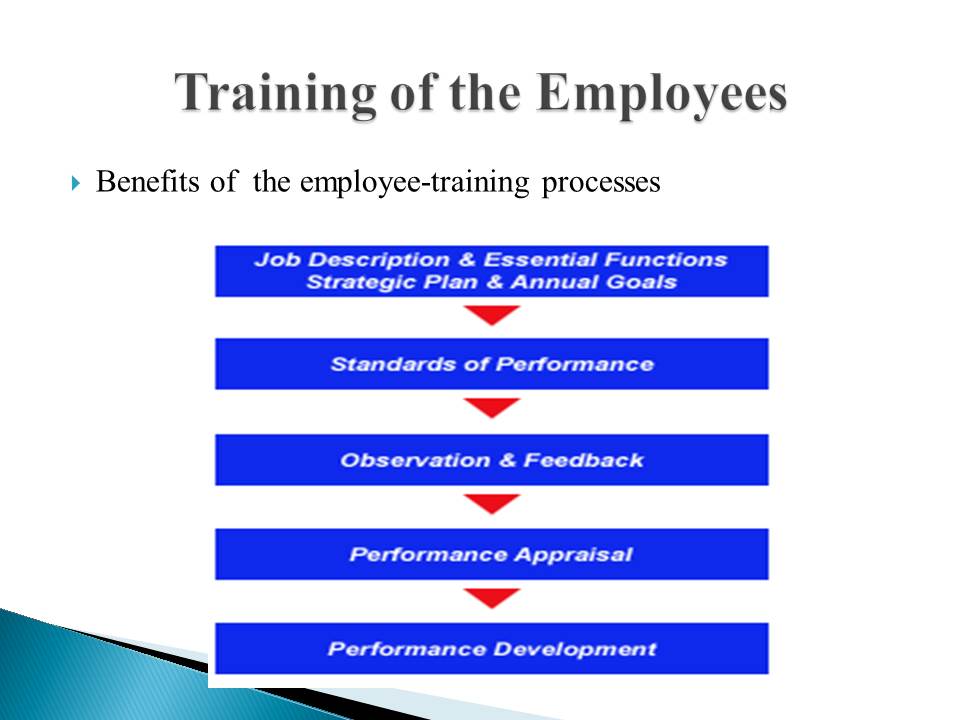
Challenges of Supervision
- Stress at workplace;
- Forced expectations;
- Leadership malfunction.
Stress is one of the biggest challenges of supervision. According to Novikova (2009), both the supervisor and the supervised may develop stress based on different contexts. The supervisor always has a target that should be met by the end of a given period. The supervisor will always try to ensure that the target is met by encouraging the employees or even forcing them to work within the expectation. When such expectations are not met, stress sets in and this may affect the ability of the supervisor to offer proper leadership to the employees. On the other hand, the employees may feel stressed when they are subjected to constant supervision at work. They may feel intimidated or mistrusted by their supervisors. This may affect their ability to deliver quality work. They will be keen on pleasing the supervisors instead of delivering high quality work.
- Retention strategies;
- Good working environment;
- Limited employee supervision.
Many employees always feel uncomfortable working in an environment where their work is monitored very closely at all times. They prefer working in an environment where they feel free doing what they understand even if they are corrected at some point. Constant supervision may make some employees consider changing their employers as a way of eliminating pressure in their lives. However, the aim of supervision in the workplace is to retain a highly skillful and successful team of employees. When the process is seen as a reason to quit the organization, then it fails to meet its very purpose. High employee turnover is counterproductive. Losing highly skilled workforce may be a major drawback and may minimize the level of success. some organizations may consider using a different approach where highly skilled workforce is subjected to very minimal supervision. However, this may be viewed as discrimination in the workplace.
Getting distracted:
Constant supervision may distract some employees. Working in an environment where one knows that he or she is constantly being watched may be very disturbing. People do make mistakes while in the workplace. However, this does not mean they are ineffective or incapable of meeting the set targets. When they realize that their supervisors are constantly in watch of their activities, they get destructed in their work trying to please their superiors instead of focusing on their assignments. In such contexts, an employee may pretend to be very busy, while doing very little. This strategy may affect the overall output of the employee in the workplace. Instead of being beneficial to the organization, the supervision may lead to dismal performance among the employees.
Diversity in the workplace:
A highly diversified workplace environment may itself be a challenge when it comes to supervision. When a supervisor is handling people of different demographical factors, it may be challenging to find a common way of conducting supervision. For instance, young employees may be comfortable having close supervision because they need guidance in what they do. On the other hand, the elderly may prefer to be given their space to do their work because they believe they have enough experience and may not need close guidance. An attempt to treat the elderly differently from the way young employees are treated will be seen as a form of discrimination. Factors such as gender, race, social status among other demographical factors may require different approaches in supervision. The supervisor may find it challenging to deal with such a highly diversified workplace.
Dissension:
- Different views of employees;
- Need for different supervisory approaches.
It is common to have cases where a section of the employees have a dissenting voice against the approach that is used to supervise their activities. In order to manage such dissenting voices, it may be necessary to change the supervisory approach. However, Certo (2010) warns that it may not be possible to find a universal approach of supervision that may be acceptable to everyone. What one group considers appropriate may be very inappropriate to a different group. This means that changing of the approach may not be the lasting solution to the dissenting voices. A supervisor may find it challenging to maintain a highly satisfied team of employees in such contexts. Addressing this challenge may involve using different strategies to different groups based on their demographical factors.
Teambuilding:
According to Novikova (2009), many organizations have realized that teambuilding is one of the best ways of managing employees. Allowing the employees to gel together into teams and work as a unit in itself is a motivation. It may be the best ways of enabling the employees work without necessarily supervising them because they will have a goal that they want to achieve as a unit. However, Certo (2010) says that having strict supervision may be counterproductive to the teambuilding spirit within an organization. When employees develop a feeling that the management does not trust them, then they may tend to avoid working as a unit towards a common course. For this reason, the management may be forced to find a way of integrating supervision into teams, with the supervisors being part of the teams without necessarily being the leaders of such teams.
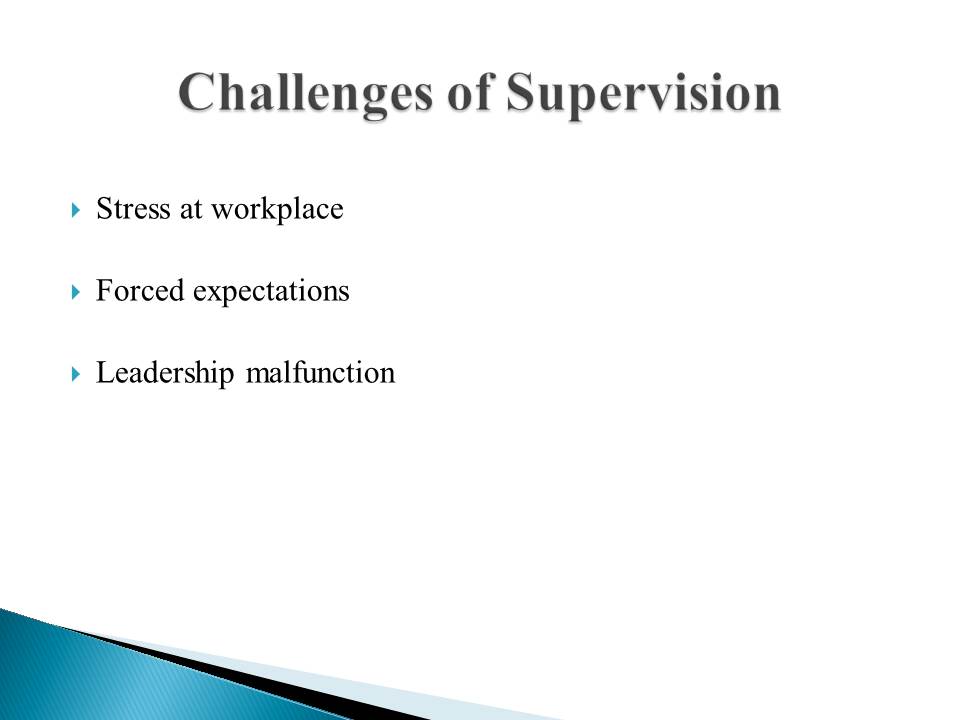

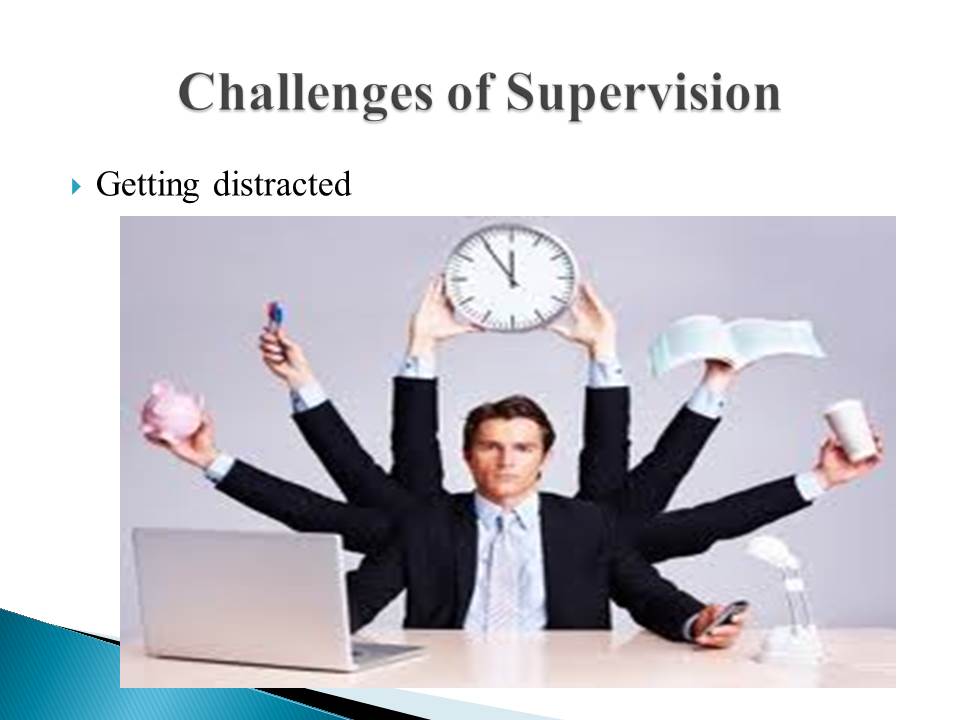

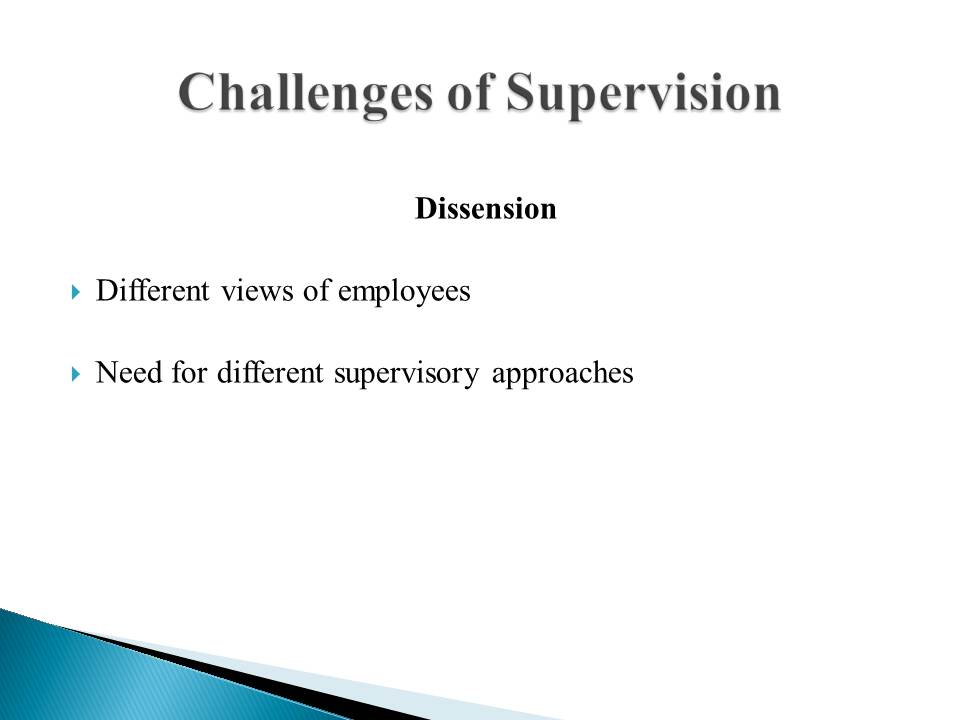
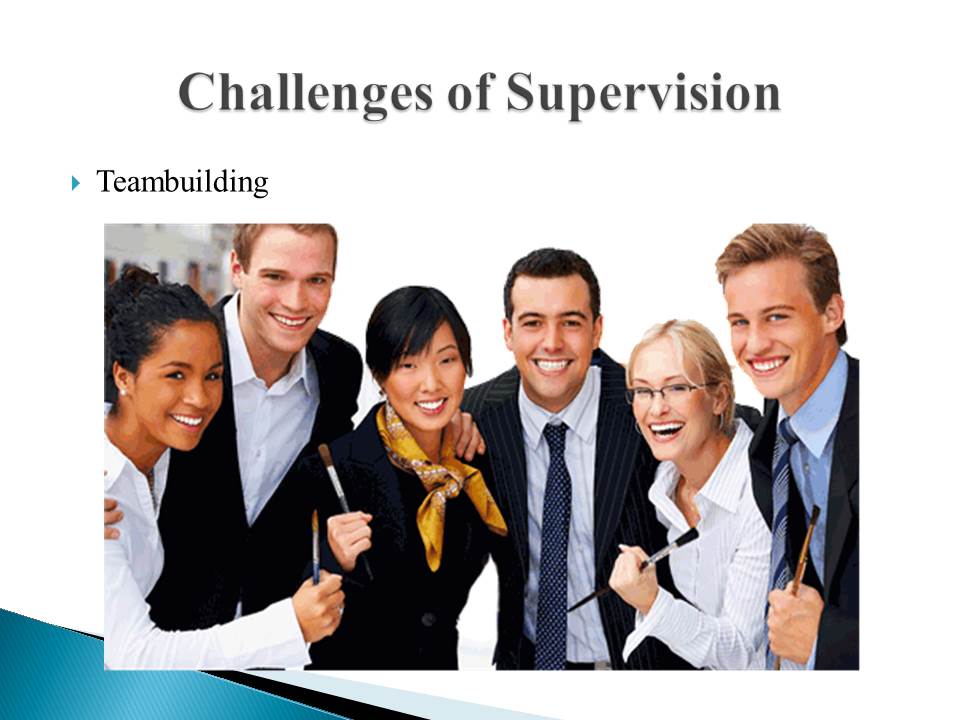
Using Technology to Enhance Supervision
CCTV cameras:
Technology has transformed the workplace environment and approaches that managers use to supervise the work of the employees. The management may use technology as a way of addressing some of the challenges of supervision discussed above. The presence of a supervisor at workstations may be intimidating to the employees. For this reason, the management may consider using CCTV cameras fitted in hidden places within the offices. This means that the employees will be under close surveillance without their knowledge. The supervisor will only need to identify the employees who are not working as per the expectations and inform them that they need to change their attitude at workplace. This makes supervision simple.
Mobile trackers:
Some organizations are currently using mobile trackers to monitor the activities of their employees, especially those who are in the logistics department. These employees are always in constant movement from one geographical location to another. It is very important for the managers to supervise these employees in order to minimize cases of pilferages and damage. To do this, it may be necessary to use mobile trackers that will enable the management to know what the employees are doing, the condition of goods on transit, and if any unauthorized passengers are allowed into the transport vessels. With these mobile trackers, the management will be able to direct these employees on what to do in case they meet challenges that need the decision of their superiors.
Monitoring Output:
- Define the expected output;
- Determine the measurements;
- Measure the employee’s output.
Organizations are currently using performance measure to determine the value of their employees. Instead of basing the performance of the employees on the time spent working on a given task, these organizations base the performance on the output of such employees. This means that the management will not focus on the amount of hours that employees spend on given tasks as long as they accomplish their tasks as per the expectations. To monitor the output of the individual employees, the management will need a special software that will give the total output per day, week, or month for every employee within all the departments. This in itself will be a motivation to the employees. The employees will realize that they are trusted to manage themselves within their respective workplaces. This may help promote healthy competition among the employees.
Integrating the activities:
- The need to integrate the activities;
- How to integrate the activities;
- Benefits of the integration.
Technology may be used to integrate activities within various departments within an organization. Sometimes the work of supervision may be very complex because various activities that are related may not be properly coordinated. For instance, in the production unit, the employees responsible for receiving the raw materials, storage, and processing should have very close coordination to avoid cases of shortage, surplus, breakage, or any form of damage or wastage in this department. When these activities are properly coordinated using the modern telecommunication technologies, the employees will know what they are expected to do at every given time. It also becomes easy to know the areas of weaknesses within the system and the employees who are performing below the expectations. This makes the work of the supervisor very simple.
Enhanced Communication System:
- Technology-enhanced communication;
- Benefits of improved communication.
When technology is used in the workplace environment, it becomes easy to enhance communication between the employees and their supervisors. Sometimes miscommunication or misconception may be witnessed between the supervisor and the employees because of poor communication systems. A supervisor may not understand the reason why an employee is underperforming or distracted on a particular day. However, with proper communication, such misunderstandings can be adequately addressed. The employees may easily communicate with their superiors to address any problems they face in their working environments. On the other hand, the supervisors may also use the same system to communicate their expectations to their juniors. Improved communication helps in improving the relationship between the managers and junior employees.
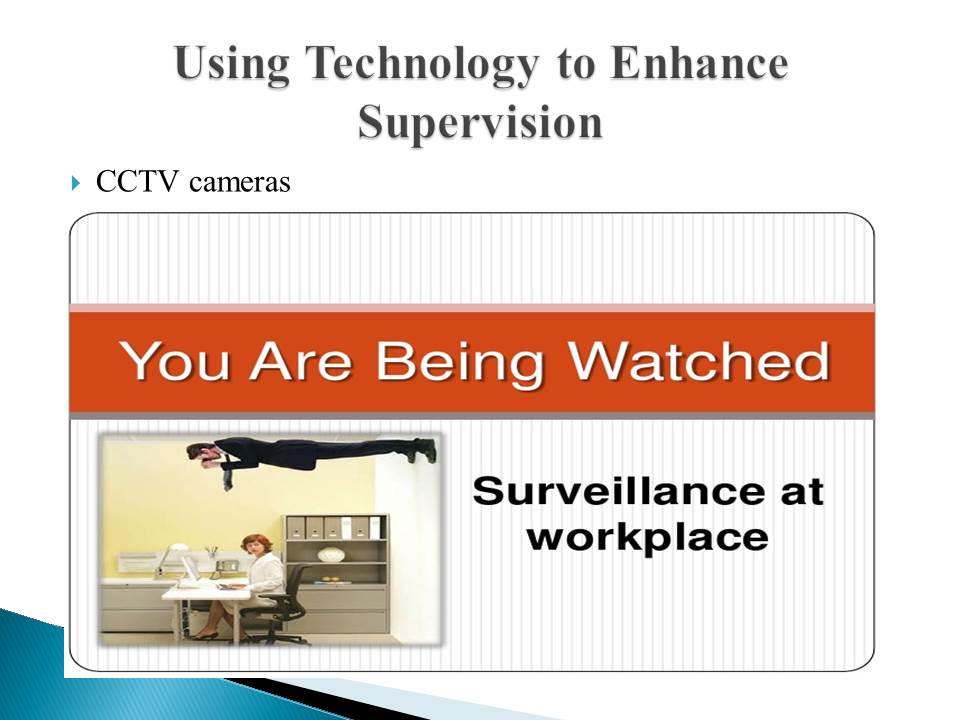
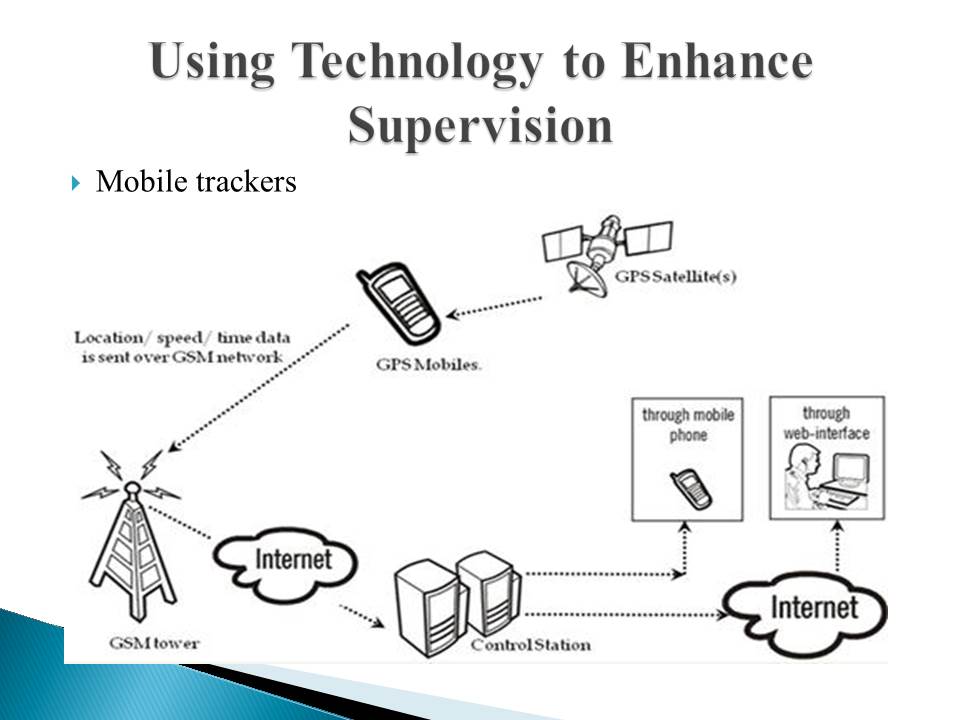
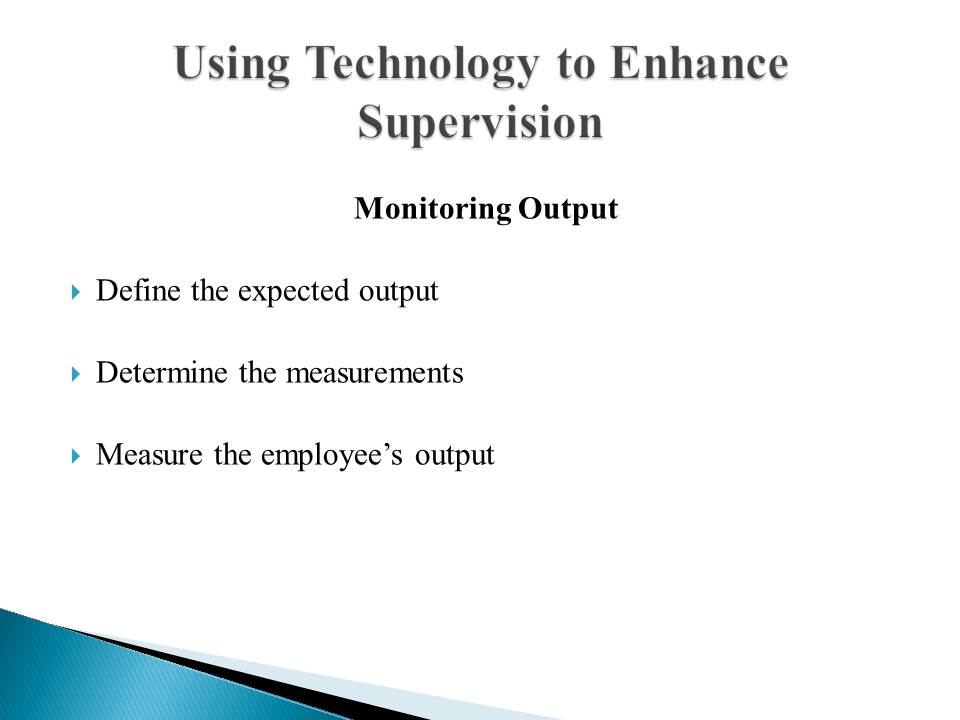
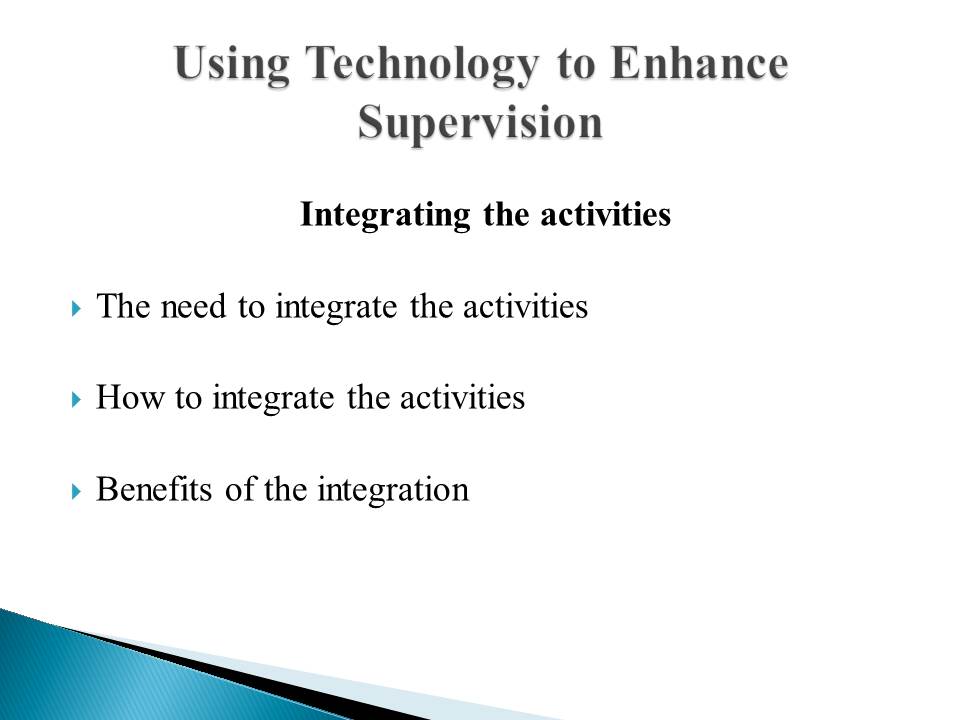
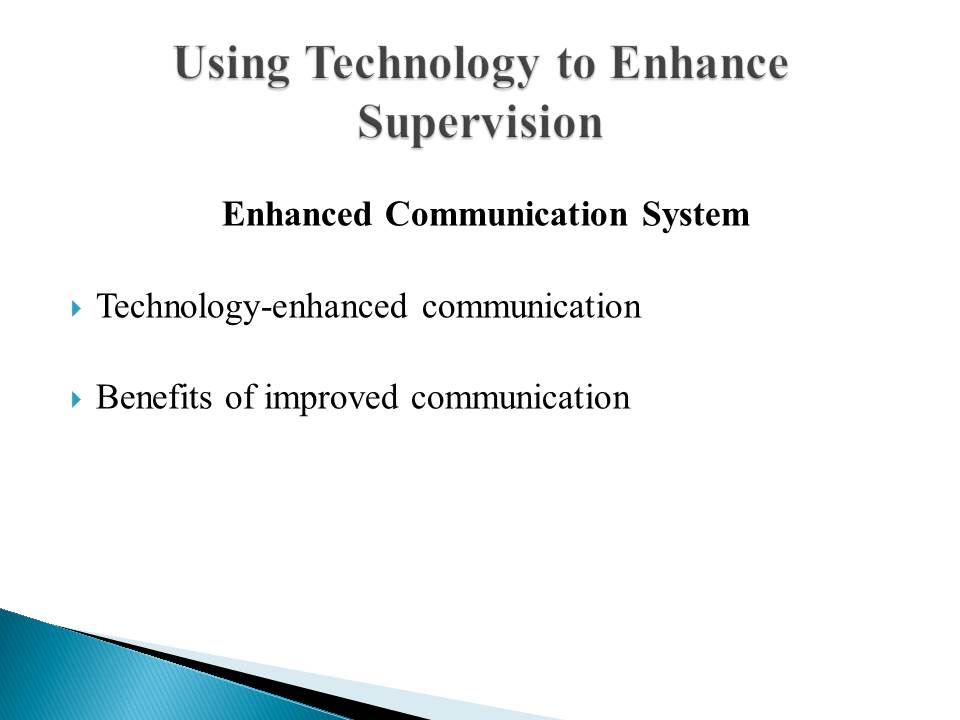
Conclusion
- How to improve supervision;
- Challenges faced when supervising employees;
- How to use technology to address supervisory challenges.
Supervision is one of the most important tasks in the management process. The management needs to ensure that there are proper structures put in place to ensure that all the departments within an organization have proper systems for supervision to ensure that employees work within the expectations. A number of challenges may exist that may hinder the management from properly executing their supervisory roles. Diversity in the workplace, conflicting interests between the teambuilding and supervision, high employee turnover are some of the challenges that many organizations face when they embrace close supervision within the workplace. Technology may be vital in addressing these challenges. Technology may make it possible for the managers to supervise the employees remotely without them realizing that they are being monitored. It also helps in enhancing communication between the employee and the employer, leading to improved communication.
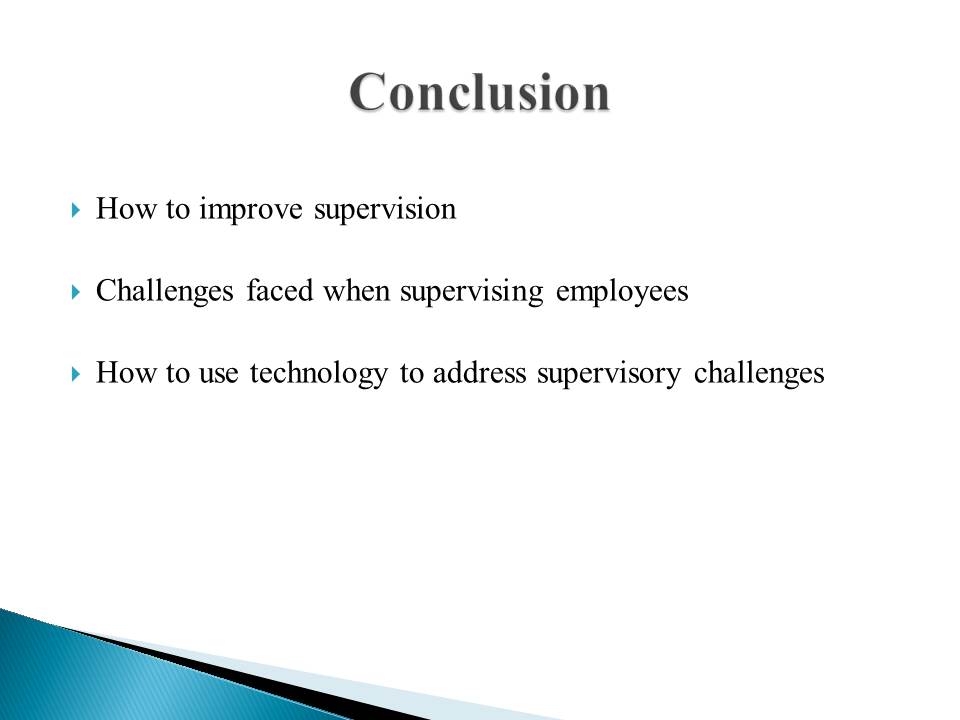
References
Certo, S. C. (2010). Supervision: Concepts and skill-building. New York: McGraw-Hill Irwin.
Levasseur, R. (2009). People Skills: Implementing Strategic Goals—A Change Management Perspective. Management Journal 39(4), 370-372.
Paton, R. A., & McCalman, J. (2008). Change Management: A Guide to Effective Implementation. London: Sage Publications.
Gaurav, K. (2013). Drivers of employee satisfaction and attrition. S.l.: Grin Verlag.
Kronberg, I. (2011). Employee Satisfaction on Cruise Ships. München: GRIN Verlag GmbH.
Novikova, K. (2009). A study of customer satisfaction factors and employee satisfaction in the hospitality industry. New York: Cengage.